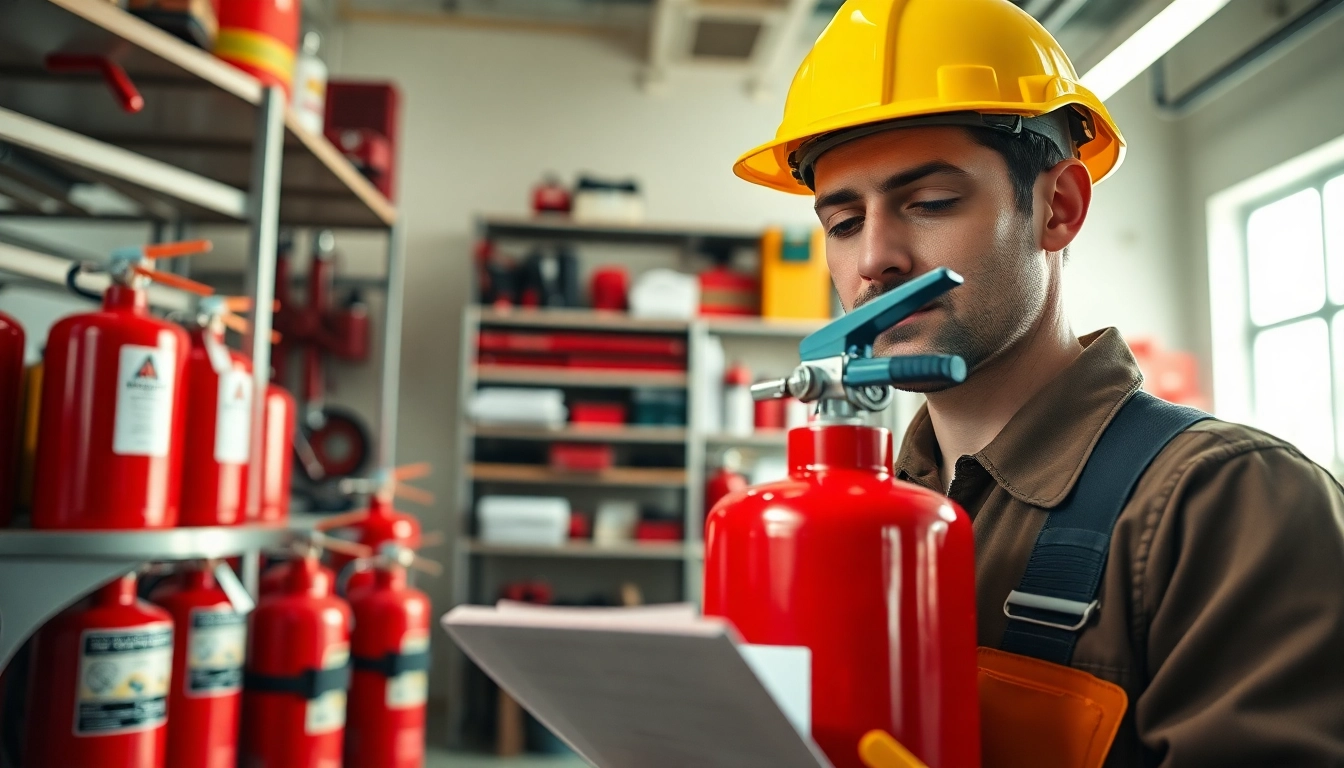Understanding Fire Extinguisher Checks
What Are Fire Extinguisher Checks?
Fire extinguisher checks involve a series of inspections, tests, and maintenance activities designed to ensure that fire extinguishers are fully operational and ready for use in the event of a fire. These checks vary in frequency and detail and generally encompass visual inspections, functionality tests, and professional maintenance to comply with safety regulations.
Why Regular Inspections Are Crucial
Regular inspections are crucial because they help identify potential issues that could prevent a fire extinguisher from functioning when needed. According to the National Fire Protection Association (NFPA) guidelines, regular checks ensure compliance with fire safety regulations and reduce the risk of property damage and loss of life during a fire emergency. Moreover, routine inspections also build a culture of safety within organizations and homes, emphasizing preparedness.
Common Types of Fire Extinguishers
Understanding the types of fire extinguishers is essential for effective checking. Common types include:
- Water (APW): Suitable for Class A fires involving ordinary combustible materials.
- Foam: Effective on Class A and B fires, especially flammable liquids.
- Dry Powder: Versatile for Class A, B, and C fires, ideal for electrical and flammable liquid fires.
- CO2: Best for Class B and C fires; safe for electrical equipment.
- Wet Chemical: Specifically designed for Class K fires, often found in kitchens.
Frequency and Guidelines for Fire Extinguisher Checks
Monthly Visual Inspections
One of the most important routines in fire safety is conducting monthly visual inspections. These checks are typically straightforward and should include the following:
- Ensure the extinguisher is accessible and not blocked by any obstructions.
- Check for visible signs of damage, such as dents or rust.
- Verify that the pressure gauge is in the operable range (usually green).
- Examine the inspection tag to ensure it is up-to-date.
Regular visual inspections help maintain the extinguisher’s effectiveness and confirm its readiness for use.
Annual Professional Inspections
In addition to monthly checks, annual inspections by a qualified technician are essential. These professionals conduct thorough evaluations that include:
- Internal examinations for wear, corrosion, or damage that may not be visible externally.
- Functional testing, including recharging any needed extinguishers.
- Re-filling extinguishers and replacing components as necessary.
This comprehensive assessment ensures compliance with local regulations and enhances fire safety in homes and businesses.
Hydrostatic Testing Intervals
Hydrostatic testing is another critical component of fire extinguisher maintenance. This process involves pressurizing the extinguisher to check its integrity and can typically occur every five to twelve years, depending on the type of extinguisher and local regulations. The testing process includes:
- Filling the extinguisher with water to test its ability to hold pressure.
- Inspecting for leaks or deformations.
- Re-certifying the extinguisher for continued use if it passes the tests.
Regular hydrostatic tests ensure that extinguishers are not only functional but safe for continued use.
Steps for Performing Fire Extinguisher Checks
Preparing for the Inspection
Preparation for fire extinguisher checks is vital to ensure a thorough evaluation. The following steps are recommended:
- Gather necessary paperwork, including the extinguisher’s maintenance history and inspection tags.
- Inform building occupants about the inspection to avoid concerns or confusion.
- Have necessary tools ready, such as a pressure gauge and any required safety gear.
Detailed Inspection Process
The inspection process can be divided into different phases:
- Visual Inspection: Check for physical damage, accessibility, and clear signage.
- Pressure Check: Verify the pressure gauge reading and ensure the extinguisher is fully charged.
- Check the Pin and Seal: Confirm that the pin is intact and that the tamper seal is unbroken.
- Labeling: Ensure that all labels are readable and understandable.
Documentation and Record Keeping
Documenting the results of each fire extinguisher check is vital for compliance and safety. Records should include:
- The date of the inspection
- Findings from the inspection process
- Recommendations for service or recharging, if applicable
- Signature of the inspector
Maintaining these records aids in identifying trends and planning future inspections.
Common Issues Found During Fire Extinguisher Checks
Identifying Wear and Tear
During checks, common issues such as rust, dents, and general wear can be identified. Recognizing these problems is crucial because:
- Rust may indicate corrosion, which can compromise the extinguisher.
- Dents can affect the integrity and operability during emergencies.
- Visible wear is a sign that the extinguisher may need to be replaced or serviced.
Understanding Pressure Gauge Readings
Pressure gauge readings are critical in determining the operational status of a fire extinguisher. Understanding what these readings mean is vital:
- Green Zone: Indicates fully charged and operational.
- Red Zone (Low Pressure): Indicates that the extinguisher needs servicing.
- Red Zone (Overcharged): Indicates potential danger, as the extinguisher may rupture.
Dealing with Non-Compliant Extinguishers
Finding a non-compliant extinguisher during checks necessitates immediate action. This could mean:
- Re-tagging and scheduling repairs or replacements.
- Ensuring that users are aware and replace defective units promptly.
- Updating records to reflect compliance status changes.
Being proactive about compliance not only enhances safety but also mitigates liabilities.
Resources and Tools for Fire Extinguisher Checks
Inspection Checklists and Templates
Utilizing inspection checklists can standardize the process and ensure thorough inspections. Templates can typically include:
- A checklist of essential items to inspect
- Spaces for notes on findings
- Areas to register actions taken
Additionally, using electronic formats can simplify record-keeping.
Professional Services Available
Engaging professional services for fire extinguisher checks is a viable solution for many businesses. Companies that specialize in fire safety can provide expert services that include:
- Regular maintenance checkups
- Updating systems to comply with local regulations
- Providing training for staff on how to use extinguishers properly
Fire Safety Education Resources
Education on fire safety for both your team and personal knowledge can vastly improve readiness. Consider utilizing:
- Online courses and webinars
- Workshops offered by fire departments and safety organizations
- Fire safety drills hosted by experts
